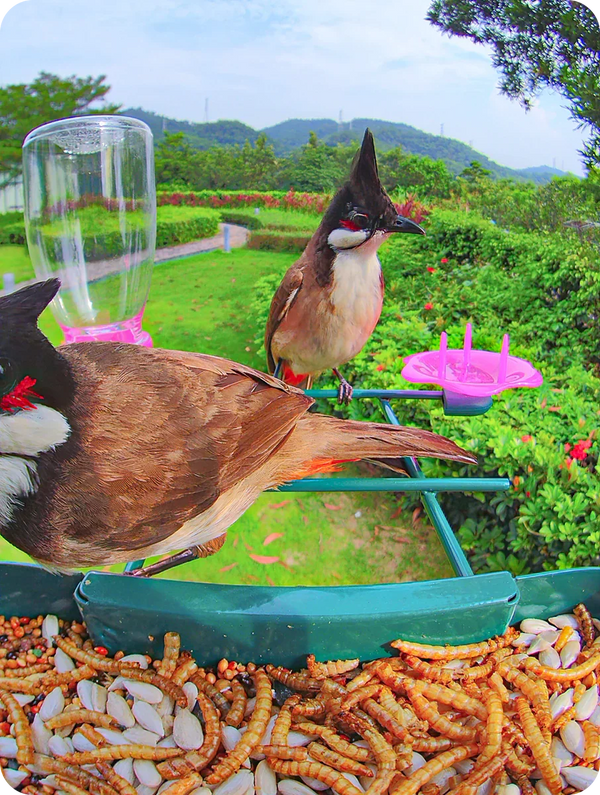Unlock the Secret to Attracting Beautiful Hummingbirds to Your Garden!
Hummingbirds are among the most enchanting creatures that can visit your garden, bringing a splash of color and a touch of magic with their iridescent feathers and astonishing agility. Their presence can transform an ordinary backyard into a lively oasis, filled with the delightful sounds of nature. However, to attract these charming birds effectively, having the right bird feeder for hummingbirds is essential. A specialized feeder not only caters to their unique feeding habits but also makes it easier for you to enjoy watching them up close. In this article, we’ll explore everything you need to know about hummingbird feeders, from choosing the right one to creating a welcoming environment in your garden.

Understanding Hummingbirds and Their Feeding Habits
Hummingbirds are remarkable creatures, known for their incredible speed and vibrant plumage. These tiny birds primarily feed on nectar, which provides them with the energy needed for their high metabolism. In addition to nectar, they also consume small insects and spiders for protein. Given their rapid wing beats and energetic lifestyle, hummingbirds require a feeder that can accommodate their feeding preferences. A specialized hummingbird feeder mimics the flowers they naturally seek, allowing them to feed comfortably. For instance, my friend Sarah recently set up a feeder filled with a homemade nectar solution, and within days, her garden was buzzing with the activity of these beautiful birds. This experience highlights how crucial it is to understand their dietary needs to attract them effectively.
Choosing the Right Hummingbird Feeder
When selecting a hummingbird feeder, there are several factors to consider to ensure you choose the best option for your garden. Size is essential; a larger feeder will hold more nectar, reducing the frequency of refills, but a smaller one may attract fewer birds at a time. The material of the feeder also plays a significant role; glass feeders are often more durable and easier to clean than plastic ones. Design is another consideration—look for feeders with bright colors, especially red, as they are known to attract hummingbirds. Additionally, ease of cleaning and refilling is crucial; feeders that disassemble easily will make maintenance a breeze. A friend of mine found a feeder that has a removable base, which made cleaning it after attracting a swarm of hummingbirds effortless. These small details can greatly enhance your experience.
Types of Hummingbird Feeders
There are various types of hummingbird feeders available, each with its own set of advantages. Tube feeders, which feature long, narrow feeding ports, are designed to mimic tubular flowers and are great for attracting specific hummingbird species. Dish feeders, on the other hand, have a wider feeding area and can accommodate multiple birds at once, making them perfect for gardens with high traffic. Window feeders provide a unique opportunity to observe hummingbirds up close, as they attach directly to your window. Depending on your garden setting and personal preferences, you can choose one type or even a combination of feeders to maximize the attraction of these delightful birds.
Best Practices for Using Hummingbird Feeders
To maximize the attraction of hummingbirds to your feeders, placement and maintenance are key. Position your feeder in a spot that is visible from your home, preferably near flowering plants that attract hummingbirds. It's best to hang feeders in shaded areas to prevent nectar from spoiling quickly in the sun. Regular maintenance is crucial; clean your feeder every few days to prevent mold and bacteria growth. When preparing nectar, a simple mix of four parts water to one part sugar will do the trick—boil the mixture to ensure it dissolves completely, and then let it cool before filling the feeder. My neighbor always has his feeder filled with fresh nectar, and he swears that the hummingbirds visit him daily, a testament to the importance of a proper feeding schedule.
Creating a Hummingbird-Friendly Garden
Enhancing your garden to be more inviting for hummingbirds involves more than just a feeder. Incorporating companion plants that produce nectar, such as salvia, bee balm, and trumpet vine, can create a natural food source for the birds. Additionally, providing perches where hummingbirds can rest and survey their surroundings will make your garden even more appealing. A water source, like a shallow birdbath or fountain, can attract them further, as hummingbirds often enjoy bathing as much as feeding. When I added a few nectar-rich plants around my feeder, I noticed a significant increase in hummingbird visits, which made my garden feel alive with their vibrant presence.
Transform Your Garden into a Hummingbird Haven
Attracting hummingbirds to your garden can be a rewarding experience, filled with the joy of witnessing these stunning creatures up close. By selecting the right bird feeder for hummingbirds, understanding their feeding habits, and creating a welcoming environment, you can transform your garden into a hummingbird haven. Remember to consider factors like feeder size, material, and maintenance to ensure a positive experience. With a little effort, you’ll be able to enjoy the beauty and magic of hummingbirds fluttering around your garden. So, take action today, set up your hummingbird feeder, and relish the delightful company of these remarkable birds!








